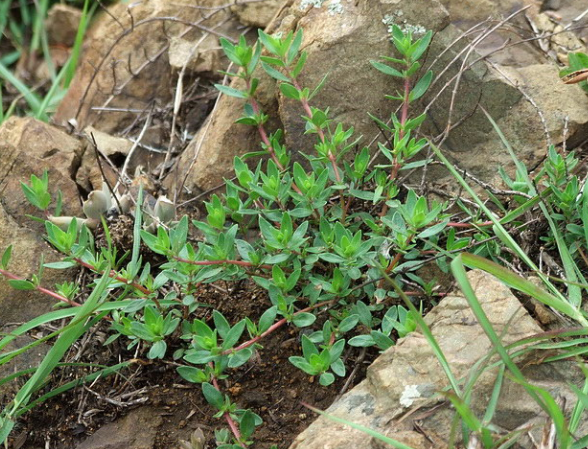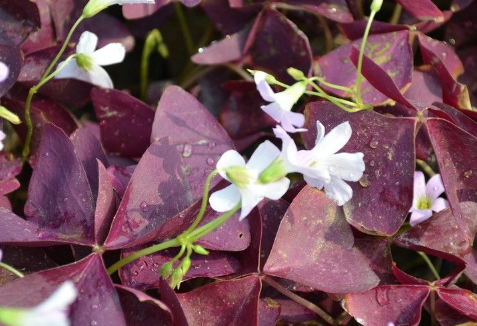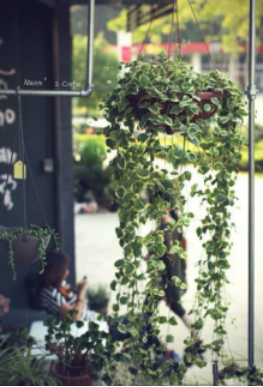Thyme propagation method
Sowing seeds
Sowing is usually carried out from March to April. The seeds of thyme are small, and the soil must be trimmed. The soil should be fine and smooth, and the seeds should be sown after watering, and then cover the surface with a layer of fine soil, and then set up a small arch shed plastic film to keep warm and moisturized. Generally, seedlings will emerge after 10-12 days, and the plastic film can be uncovered when the temperature is suitable. In the seedling stage, the soil should be kept moist and weeds should be removed in time. When the seedling height reaches 10-15cm, the seedling height should be set in the field according to row spacing of 30-45cm and plant spacing of 25-30cm, and then sufficient water can be poured into daily management.

Cuttage
Cutting propagation is relatively easy to take root, which is a common method of thyme. In order to achieve the same quality in mass production, cutting branches with terminal buds of 3-5 nodes or about 5cm with terminal buds can survive, but the rooting speed is slow and the number of roots is small. The cuttings were inserted into a 2cm paper tube seedling plate and transplanted after rooting and survival.
Ramet
Ramets are usually used for more than 3 years, and the mother plants that have not yet germinated are dug out by roots in late March or early April, and then divided into 4-6 parts according to the size of the clumps. Each plant should be guaranteed to produce 4-5 buds and then planted. Clustering method can also be used to propagate thyme, that is, its stolon is cut off during its growth period and then transplanted. The striping and split method make the branches touch the ground and grow roots automatically, and the direct cutting is an independent plant, which is more suitable for home gardening growers.
To learn more about thyme, please follow the four Seasons Botanical Network!
Thyme Picture Culture methods and points for attention of Thyme
Thyme is a kind of ornamental plant with strong aroma. It can beautify the environment, refresh the mind, and purify essential oil for people to use. However, many people in life are not familiar with thyme and do not know what it looks like. In a moment, I will sort out its pictures and share them with you. At the same time, I will also show you how to cultivate thyme and what things we should pay attention to.
Culture method
1. The environment for breeding thyme.
Thyme, a plant that likes a warm environment, should be placed in a mild environment of 20 to 25 degrees. It cannot be raised in a hot and humid environment. Indoor ventilation should be increased in summer when the weather is hot, and water should be sprayed on the leaves of thyme in time to cool down. In addition, thyme needs plenty of sunshine in the production process, usually we should put it in the sunny balcony or sunny room, if the sun is not enough, it will make the plant grow in vain.
2. Fertilizer and water management of thyme
The fertilizer and water management of this plant is particularly important. The leaves of this plant are slightly fleshy, drought tolerance is relatively strong, waterlogging tolerance is particularly poor, usually water supply can not be too much, watering once a week can and can not make the pot soil too wet, or stagnant water appears in the flowerpot, otherwise its roots will rot. Thyme, this plant has relatively low requirements for fertilizer, it grows slowly, usually does not need regular fertilization, only needs to be fertilized every half a month when thyme grows vigorously in spring.
Matters needing attention
Usually raise thyme, we must pay attention to rest and recuperation, it is necessary to pick the heart during the seedling period, so as to promote branching and shaping, and usually prune it at any time according to its growth, so as to maintain the beauty of the plant. at the same time, it is also conducive to its ventilation and healthy growth. In addition, the plant of thyme should be changed every two years, and the soil should choose neutral or alkaline soil with good drainage.
Propagation methods of thyme
Three propagation methods of thyme
Sowing seeds
The time of sowing and raising seedlings should be from March to April in spring.
The seeds of thyme are small. When raising seedlings, the soil should be fine, crushed and leveled as far as possible, the soil should be compacted with moderate force, sown after watering, and then covered with a layer of fine soil after sowing. Finally, a plastic film is used to help keep warm and wet.
The seedlings can emerge in about 10-12 days, and the film will be removed when the temperature is appropriate. If weeds are found in the roots at the seedling stage, they should be removed in time, and the soil should be kept moist.
Cuttage
The survival rate of the cutting method is very high, and the plant is easy to root.
Cuttings with apical buds of about 5 cm can be cut, and branches with lignified and apical buds are selected for cutting. after survival, the roots will be slow and the roots will be sparse.
The cutting selection is carried out in a paper tube seedling plate with a diameter of about 2 cm, which is more beneficial to the transplant after survival.
Ramet
In the method of plant division, plants of more than three years old should be selected.
The time is chosen in late March or early April when it has not yet budded.
The specific method is to dig out the mother plant by root, according to the actual size of the plant cluster, it will be divided into 4-6 parts, each part to ensure that there are 4-5 buds, can be planted.
- Prev

Culture method of Elaeagnus angustifolia
1. Purple leaf sorrel likes fertile and moist soil, but the plant is afraid of waterlogging, so the soil should be loose and breathable and well drained. two。 Temperature the suitable temperature for growth is 16-22 ℃, which is relatively cold-resistant, not less than 0 ℃ in winter, otherwise it will frostbite the rhizome; Eleurotus angustifolia is not resistant to high temperature.
- Next

Introduction to the method of water culture of Catharanthus roseus
The main contents are as follows: 1. Before hydroponic cultivation, we need to find a transparent glass container. The size of the container should be selected according to the plant, and fresh water should be added to the container, with a small amount of water. 2. Select twigs in hydroponic culture, select healthy twigs, and then insert them into a prepared container.
Related
- Fuxing push coffee new agricultural production and marketing class: lack of small-scale processing plants
- Jujube rice field leisure farm deep ploughing Yilan for five years to create a space for organic food and play
- Nongyu Farm-A trial of organic papaya for brave women with advanced technology
- Four points for attention in the prevention and control of diseases and insect pests of edible fungi
- How to add nutrient solution to Edible Fungi
- Is there any good way to control edible fungus mites?
- Open Inoculation Technology of Edible Fungi
- Is there any clever way to use fertilizer for edible fungus in winter?
- What agents are used to kill the pathogens of edible fungi in the mushroom shed?
- Rapid drying of Edible Fungi

